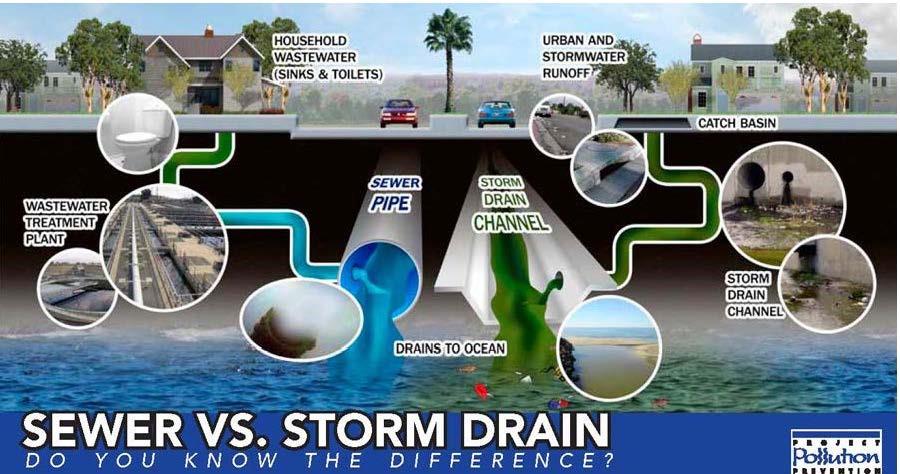The Basics of Stormwater
What is Stormwater and Why Does it Matter?....
Water is our single most precious natural resource, and it is the responsibility of each citizen to help protect that resource. Our City’s stormwater drainage system is a pathway for every drop of water to find its way in to our ditches, canals, natural streams, rivers and marshes. These resources should be conserved; therefore, we must think about how to protect our stormwater system from pollution. With this in mind, it is up to City residents to consider every action taken that will have an affect on our water.
What is stormwater?
Stormwater is water released from clouds in the form of rain, freezing rain, sleet, snow, or hail that flows over land or impervious (waterproof) surfaces such as roadways, rooftops, parking lots, etc.
What is stormwater runoff?
Stormwater runoff is rainfall that flows over land surface and into impervious areas such as paved streets, roads, driveways, parking lots, building rooftops, and other paved surfaces that do not allow water to soak into the ground. Because of this, water "runs off" into the City's stormwater drainage system and into neighboring wetlands, streams and rivers.
Stormwater runs off streets, lawns, farms, as well as construction and industrial sites, where it picks up fertilizers, dirt, sediment, pesticides, oil & grease and many other pollutants on the way to local waterways. Unlike pollution from industry or sewage treatment facilities, which is caused by a discrete number of sources, stormwater pollution is caused by the daily activities of people everywhere.
Stormwater discharges are a significant contributor to local water quality impairments, possibly preventing recreational use or damaging habitat for fish, other aquatic organisms and wildlife.
The pollution you prevent today will protect your natural resources and drinking water supply tomorrow.

What is stormwater management?
Stormwater management involves the control of stormwater runoff. This process includes changing land use practices and regulating development in order to maintain the quality, quantity and rate of stormwater runoff.
Stormwater management also incorporates preventing runoff at the source by minimizing the amount of hard surfaces; providing areas to detain water and slow its progress toward the streams; amending soils in order to absorb more water; constructing filtration areas with vegetation to filter water as it moves across the land; and practicing good housekeeping both day-to-day and on construction sites in order to prevent sediment and other pollutants from washing into streams.
ONLY RAIN DOWN OUR STORM DRAINS.
Why is stormwater management important?
In areas that do not have man-made impermeable surfaces, precipitation normally takes a long time to reach a stream. A small amount of water falls on the stream surface, but most of the water reaches the stream only after it has soaked into the ground and moved through the soils.
When impermeable surfaces are added to a watershed, the water reaches the stream very quickly and in much larger quantities than the stream is used to handling. In addition, urban areas (more developed areas) are normally serviced by a system of pipes and catch basins which are designed to get water off the land as quickly as possible and convey it to the stream. This excessive volume of water can be more than the channel can handle and flooding, as well as erosion of the channel results. When the channel erosion occurs, it causes cloudy (turbid) water that negatively affects the organisms in the stream and the downstream users of the water, in addition to destroying habitat. It is, therefore, important to prevent runoff at the source wherever possible.